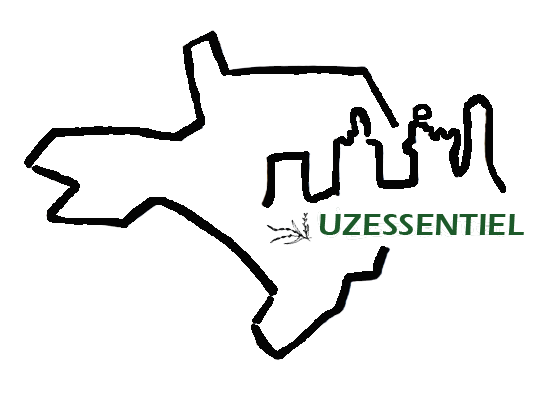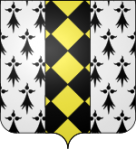Saint-Victor-des-Oules, a Gard village
FR - Would you like a guided tour of the village of Saint-Victor-des-Oules?
The editorial team takes you on a stroll through the heart of this charming little Gard village.
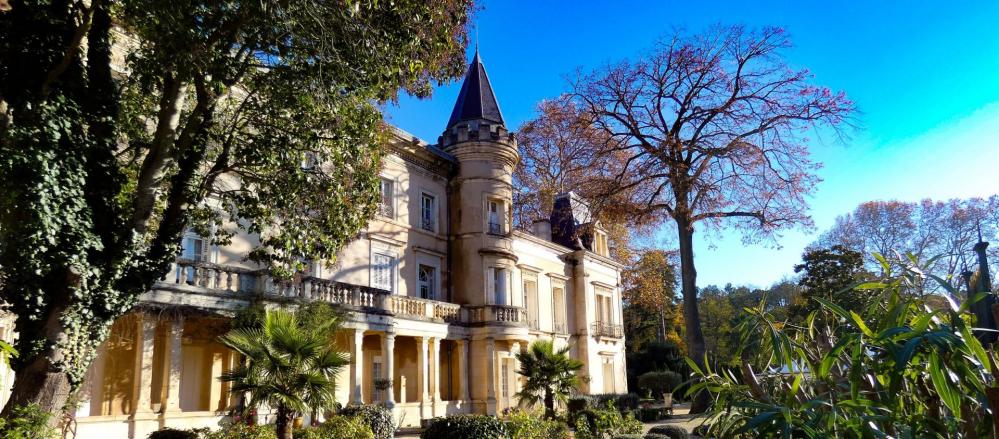
|
The village's name refers to a priory dedicated to the Marseille martyr Saint-Victor and the hamlet of Oules.
|
LET'S VISIT
Protected by the Saint-Victor church, the village has an interesting architectural heritage, sometimes reminding us that the site was once home to several brickworks.
A LITTLE HISTORY
Although Sancti Victor de Orlis only appears in written records in the 12th century, at a time when the pottery industry (bricks and jugs - 'dourques', destined for Nîmes, Avignon or Marseille) was at its best, However, the site also has a rich past ranging from ‘prehistoric to Palaeolithic times, with the oldest known human traces in Saint-Victor dating back to the Mousterians’ (a lithic industry from the Middle Palaeolithic period), as the exhibition at the town hall reminds us.
|
About the statue-menhir at Saint-Victor-des-Oules: ‘In the Gard, statue-menhirs have undergone various transformations... which show that local populations took an early interest in them’... Among the thirty or so found around Uzès, ‘the statue-menhir at Saint-Victor-des-Oules (which can be admired at the Museum of Natural History and Prehistory in Nîmes) was Christianised’ (Persée.fr). Today, it can be seen at the Musée d'histoire naturelle et de préhistoire de Nîmes, where it is on display.
|

|
‘... In the 1970s, a CNRS researcher, Jacques Thiriot, located a large number of remains of 12th and 13th century potters' kilns buried between the Combes (or Dourquier) stream and the heights overlooking the Combes valley, following a survey carried out in the 19th century by the geologist Emilien Dumas... The old name given to this place was Les Ouillères’ (Potiers et mineurs de terre, Histoire d'un village : Saint-Victor-des-Oules, Albert Ratz, 20012). |
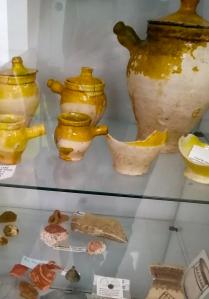
At the time of the Frankish kings, ‘Uzège was entrusted to the bishops of the duchy of Uzès, who gradually decided to leave the territory to the local lords’.
The village of Saint-Victor-des-Oules then spread out at the foot of the castellas, a tower that disappeared in the last century, and only began to develop ‘after the Hundred Years’ War (1337/1463) around the old church’.
Pottery production also evolved and, from the ‘15th and 16th centuries onwards, glazes with green, brown and yellow hues’ appeared, as can be seen at the The Musée Borias, in Uzès.
The castle was built in the 16th century by the De Vaulx family. Sold at the end of the 17th century to the Protestant Perrotat d'Uzès family, it was enlarged on the site of the original Romanesque church. In 1709, it was bought by the d'André family, of minor nobility, who gave the village several mayors and opened the very first brickworks in the village.
|
‘Work on the new church, using materials from the demolition of the first place of worship, took almost six years, At the same time, the cemetery migrated into a somewhat cramped space... The new church was consecrated on 17 March 1686 and blessed by the vicar of Uzès cathedral. On entering the new church, on the left is the holy water font donated by the Pascal family in 1900, and further on in the nave, at the entrance to the choir, a gilded statue... This figure is none other than Saint Victor, dressed in the uniform of the officers of the Roman legion, brandishing the palm of martyrdom...’ (Potiers et Miniers, Albert Ratz, Histoire d'un village de l'Uzège : Saint-Victor-des-Oules, 2002) |
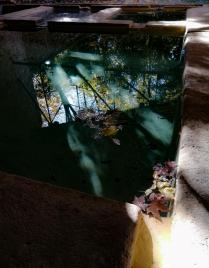 From 1876 onwards, the castle changed owners many times before being acquired by Léonce Pascal, former director of Paris Bon Marché department store and whose figures, L and P, can still be seen on ‘the lintels of the château's new openings’.
From 1876 onwards, the castle changed owners many times before being acquired by Léonce Pascal, former director of Paris Bon Marché department store and whose figures, L and P, can still be seen on ‘the lintels of the château's new openings’.
Mayor of Saint-Victor from 1892 to 1896, mayor of Uzès from 1896 to 1908 and member of parliament for the Gard from 1898 to 1902, Léonce Pascal added his own personal touch to the castle's appearance, adding a vast park with sometimes exotic species: ‘The old façade, with its Tuscan columns, double pear balusters and gargoyle cornice, was joined by a western wing of brown rubble stone and Corinthian pilasters, enhanced by a band of glazed tiles in the spirit of the Belle Epoque. To the east, a massive square tower was surmounted by a thick railing with geometric motifs and pyramidions at the four corners...’.
He built for the village a clock tower built in 1902 on what was before the village cemetery, which had been moved outside the village in 1872, down the chemin de l'oratoire.
Saint-Victor-des-Oules also has a magnificent wash-house, below the castle on the other side of the road, whose roof was renovated in 1913 thanks to the help of Madame Cécile Pascal.
|
<- The coat of arms of Saint-Victor-des-Oules Ermine on a lozenge pale Or and Sable Did you know? From the top of the neighbouring hill, the site of an ancient Celtic oppidum (5th to 1st century BC), the Madonna de Montaigu protects the village. ‘At the beginning of the 20th century, the Pascal limousine was the very first car to enter the village via the access road. to the village via the open access road through the château grounds’. (Potiers et Miniers, Albert Ratz, Histoire d'un village de l'Uzège : Saint-Victor-des-Oules, 2002) |
THE NEW BEGINNING OF SAINT-VICTOR-DES-OULES
As the mining industry ran out of steam over the years, it finally disappeared in 1965, gradually giving way to the exploitation of ‘sandstone-quartzite quarries, essential for the special steels of the Rhône’, taking advantage of a subsoil rich in fireclay (ola in Latin means pot).
Today, the village welcomes visitors in the calm of its sleepy little streets, such as rue des escaliers, where you can see the Maison des artistes, rue de la mairie, traverse de Saint-Quentin, chemin des cabres mortes, chemin des jardins or chemin de l'oratoire...
There's also the Jardin des Oules, the 12th Jardins remarquables in the Languedoc-Roussillon region, at the entrance to the village. This 2-hectare garden features an open-air exhibition of 20 sculptures in summer, a ‘labyrinth planted with 1,200 pyramid-shaped olive trees framed by a collection of bamboo trees’, 2 artificial grottoes and ponds overlooked by plane trees, chestnut trees, maples, lime trees, American red oaks, accompanied by rarer species with ‘staggered flowering periods (Paulownia Imperialis, Catalpa Bignonioides, Tulipier de Virginie, Magnolias, Hydrangeas, Céanothes, Viburnums, Rosiers Chinensis)... inspired by the spirit of collecting found in the 19th century’ ... or take in the many shows and artistic and cultural events in its Théâtre de Verdure (nature theatre) when the weather is fine.
Did you know? Saint-Victor-des-Oules is also home to a number of artists, including painters Ruth Wechlin and Blandine Saint-Oyant, ceramist Anne-Marie Wolters and mosaicists Carol Graf and Anne Deparis. The village is as much about history as it is about culture.
Now it's your turn to take a stroll!
Many thanks to Stéphanie and Anne for their guided tour, and to the Mairie de Saint-Victor-des-Oules for the documentation provided.
Sources: Saint-Victor-des-Oules Town Hall website, Potiers et mineurs de terre, Histoire d'un village de l'Uzège : Saint-Victor-des-Oules (Gard) by Albert Ratz, published by La Mirandole, 2002.
About Albert Ratz: Professor of History/Geography, local correspondent for the Service régional de l'Archéologie, founding member of Histoire et Civilisation de l'Uzège, bases his work on excavations, archives, eyewitness accounts from elders and everyday observations (Potiers et Miniers, Albert Ratz, Histoire d'un village de l'Uzège : Saint-Victor-des-Oules, 2002).
